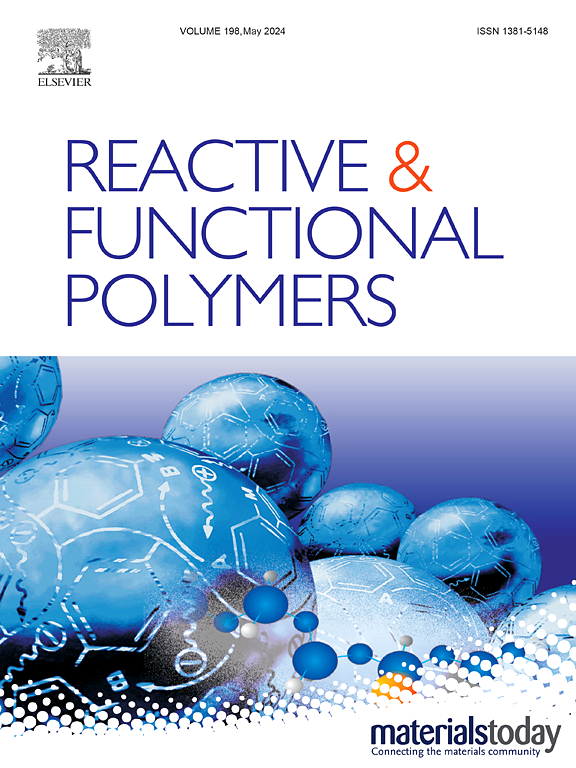Synthesis of betulin dioleate epoxide as a bio-based building block for epoxy resin formulations with modified rapeseed oil
IF 4.5
3区 工程技术
Q1 CHEMISTRY, APPLIED
引用次数: 0
Abstract
Growing demand for sustainable alternatives to petrochemical-based epoxy resins has spurred the development of bio-based systems. This study introduces a targeted synthesis using betulin extracted from birch bark to produce high-value polymeric resins. For the first time, a novel betulin-derived epoxide (BOE) was synthesized and combined with epoxidized rapeseed oil (ERO), then thermally cured with seven different anhydrides and three distinct thermal initiators. Samples of 21 compositions were formulated, and three optimally cured ones were studied in detail. Rheological and infrared analysis revealed a gel time of approximately 45 min, with maximum conversion achieved within 75 min, yielding conversion rates of 84–93 %. Hardness tests showed Shore hardness values ranging from 37 to 81 (Shore A) and 10 to 33 (Shore D), pencil hardness between 2B and 3H, and Vickers microhardness from 0.7 to 9.3 HV. Tribological analysis revealed wear rates from 1.27 to 1.76 × 10−3 mm3 N−1 m−1 and friction coefficients from 0.610 to 0.688 under various load conditions, confirming excellent wear resistance. The cross-cut adhesion tape test demonstrated adhesion with a 5 A rating. The study underscores the potential of combining soft and hard macromolecular chain block designs, optimized hardener, and initiator selection to yield bio-based epoxy resins tailored for specific applications and performance requirements – offering a viable alternative to conventional fossil-based epoxy analogs.

求助全文
约1分钟内获得全文
求助全文
来源期刊

Reactive & Functional Polymers
工程技术-高分子科学
CiteScore
8.90
自引率
5.90%
发文量
259
审稿时长
27 days
期刊介绍:
Reactive & Functional Polymers provides a forum to disseminate original ideas, concepts and developments in the science and technology of polymers with functional groups, which impart specific chemical reactivity or physical, chemical, structural, biological, and pharmacological functionality. The scope covers organic polymers, acting for instance as reagents, catalysts, templates, ion-exchangers, selective sorbents, chelating or antimicrobial agents, drug carriers, sensors, membranes, and hydrogels. This also includes reactive cross-linkable prepolymers and high-performance thermosetting polymers, natural or degradable polymers, conducting polymers, and porous polymers.
Original research articles must contain thorough molecular and material characterization data on synthesis of the above polymers in combination with their applications. Applications include but are not limited to catalysis, water or effluent treatment, separations and recovery, electronics and information storage, energy conversion, encapsulation, or adhesion.
 求助内容:
求助内容: 应助结果提醒方式:
应助结果提醒方式:


